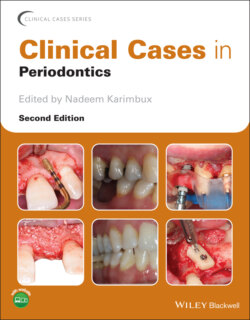Читать книгу Clinical Cases in Periodontics - Группа авторов - Страница 38
Discussion
ОглавлениеIn dental plaque‐induced gingivitis, the inflammation is confined to the gingiva without attachment or bone loss, making it a reversible condition (with treatment). Gingivitis can also occur on a reduced but healthy periodontium. Reduced but healthy periodontium is when there is attachment loss due to past non‐periodontitis cause (e.g. gingival recession) or due to past history of periodontitis and/or its treatment but currently exhibiting shallow sulci (J). A thorough history and periodontal examination must be completed to arrive at a diagnosis. Other characteristic features associated with dental plaque‐induced gingivitis include the presence of plaque at the gingival margin, increased gingival exudate, and bleeding on probing (K). With good plaque control, the condition should resolve [1]. If there is a medical concern, it is typically identified by obtaining a thorough medical history. Conditions such as diabetes and leukemia have a profound effect on gingival health, and therefore the patient must be evaluated accordingly. In women, hormonal changes, such as those that occur during the onset of puberty, pregnancy, or menstruation, have a transient effect on the gingival inflammatory status of these patients [2], which when combined with poor plaque control will lead to severe gingivitis [3,4]. After a diagnosis is reached, the treatment plan will include oral hygiene instructions, an initial phase of treatment (scaling or scaling and root planing) with a four‐ to six‐week reevaluation. If the symptoms persist at this visit (despite an improvement in the patient’s oral hygiene), the patient should be referred to a physician to rule out any potential systemic conditions that might cause bleeding.
